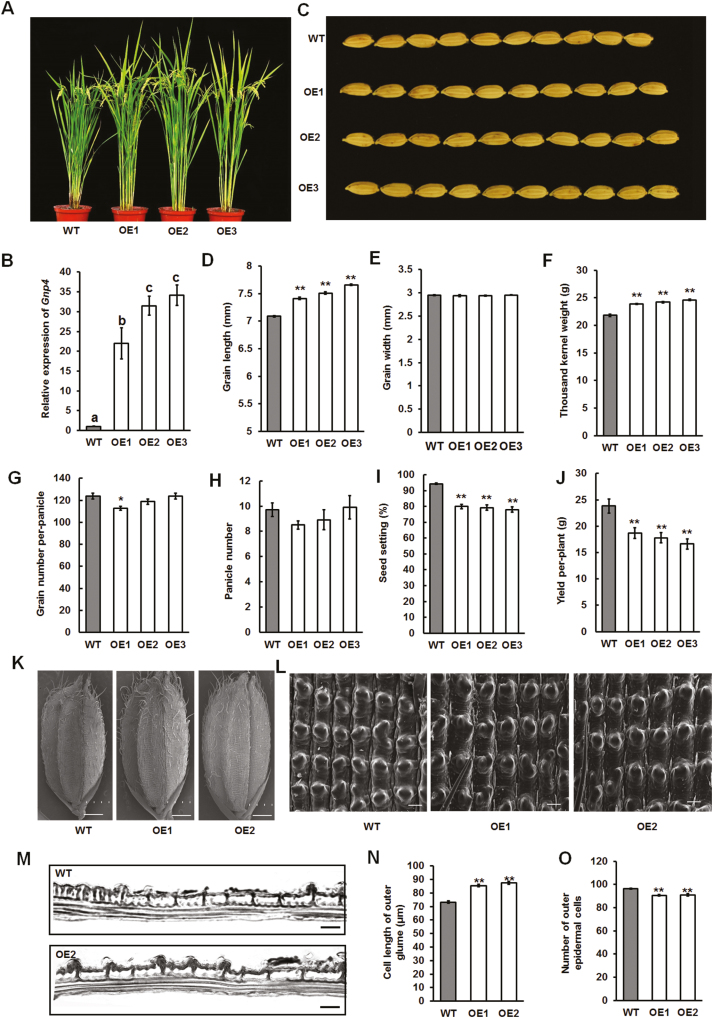Fig. 2.
Gnp4/LAX2 is a regulator of grain length in rice. (A) Morphology of Gnp4-overexpression and wild-type (WT) Nipponbare plants at the mature growth stage. (B) Relative expression levels of Gnp4 in the WT and three transgenic plants. Data are means (±s.e.m.) (n=3 plants, each with three technical repeats). Different letters indicate significant differences between means according to LSD tests (P>0.05). (C) Phenotype of grains from Gnp4-overexpression and WT plants. (D–J) Grain length (D), grain width (E), thousand-kernel weight (F), grain number per panicle (G), panicle number (H), seed setting (I), and yield per plant (J) of Gnp4-overexpression and WT plants. Data are means (±s.e.m.) (n=20 plants). (K) SEM of glumes of WT and Gnp4-overexpression plants. Scale bars are 1 mm. (L) Enlarged images of the outer surfaces of glumes. Scale bars are 50 μm. (M) Longitudinal sections of the lemma before flowering. Scale bars are 50 μm. (N) Cell length (N) and number (O) of outer glumes of Gnp4-overexpression and WT plants. Data are means (±s.e.m.) (n=12 grains). Significant differences compared with the WT were determined using Student’s t-test: *P<0.05, **P<0.01.

